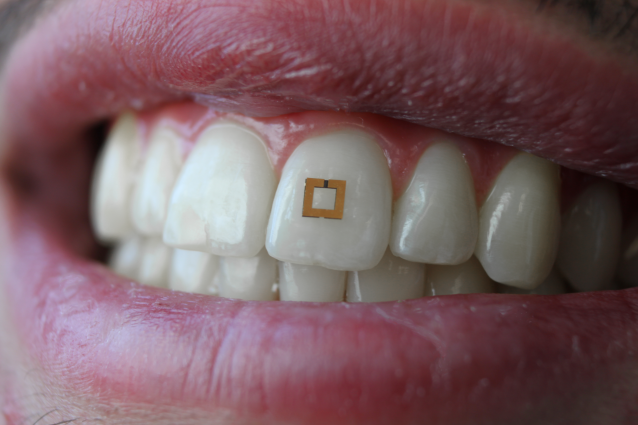Better Diet Data Via Tooth-Mounted Sensors
Posted on Categories Discover Magazine

In First World countries, where famine is unheard of, people are instead eating themselves to death.
Surrounded by wealth and access to health care, non-communicable diseases are responsible for roughly 38 million deaths each year. Apart from sedentary lifestyles, smoking and alcohol abuse, our daily diets are also a primary driver of poor health. Food-related pathologies such as diabetes, cancer and heart disease are all ticking upward along with people’s standard of living.
So how do we get out of this funk? One way is for scientists to conduct large-scale studies to examine how people’s diets mesh with their lifestyles. Additionally, dieticians can also recommend individualized interventions based on a careful analysis of people’s daily food intake. But collecting these crucial data remain difficult; it’s not easy to get a highly accurate measure of the foods people eat.
Oftentimes, diet studies rely on self-reported surveys and journals that are hostage to the whims of each participant. People forget. People feel self-conscious about their food choices and may fudge (pun intended) the data. However, a new sensor that fits on a person’s tooth could cut out this unpredictable variable—human nature— altogether.
Researchers from Tufts University School of Engineering designed a tiny sensor that, when stuck to a tooth, can wirelessly relay precise information about glucose, alcohol and salt intake. When the device comes in contact with salt, for example, its electrical properties shift, causing its other components to absorb and transmit different radiofrequency wavelengths unique to each chemical or nutrient. That information is then beamed to a mobile device for recording.
“In theory we can modify the bioresponsive layer in these sensors to target other chemicals – we are really limited only by our creativity,” says Fiorenzo Omenetto, an author on the study, which was published recently in the journal Advanced Materials. If you can put it in your mouth, it appears Omenetto and his team can measure it.
It’s not to say that researchers haven’t leaned on technology to improve their dietary espionage, but the solutions are sort of clunky and still subject to inaccuracies. There are devices that measure the mechanical action of swallowing or biting, devices that capture sounds of munching and even devices that literally photograph the food people eat. At their heart, these solutions were meant to serve as a means to verify self-reported data from participants—not to stand on their own.
The solution from the Tufts team seems to solve many of these issues, and may leave researchers and dieticians smiling.